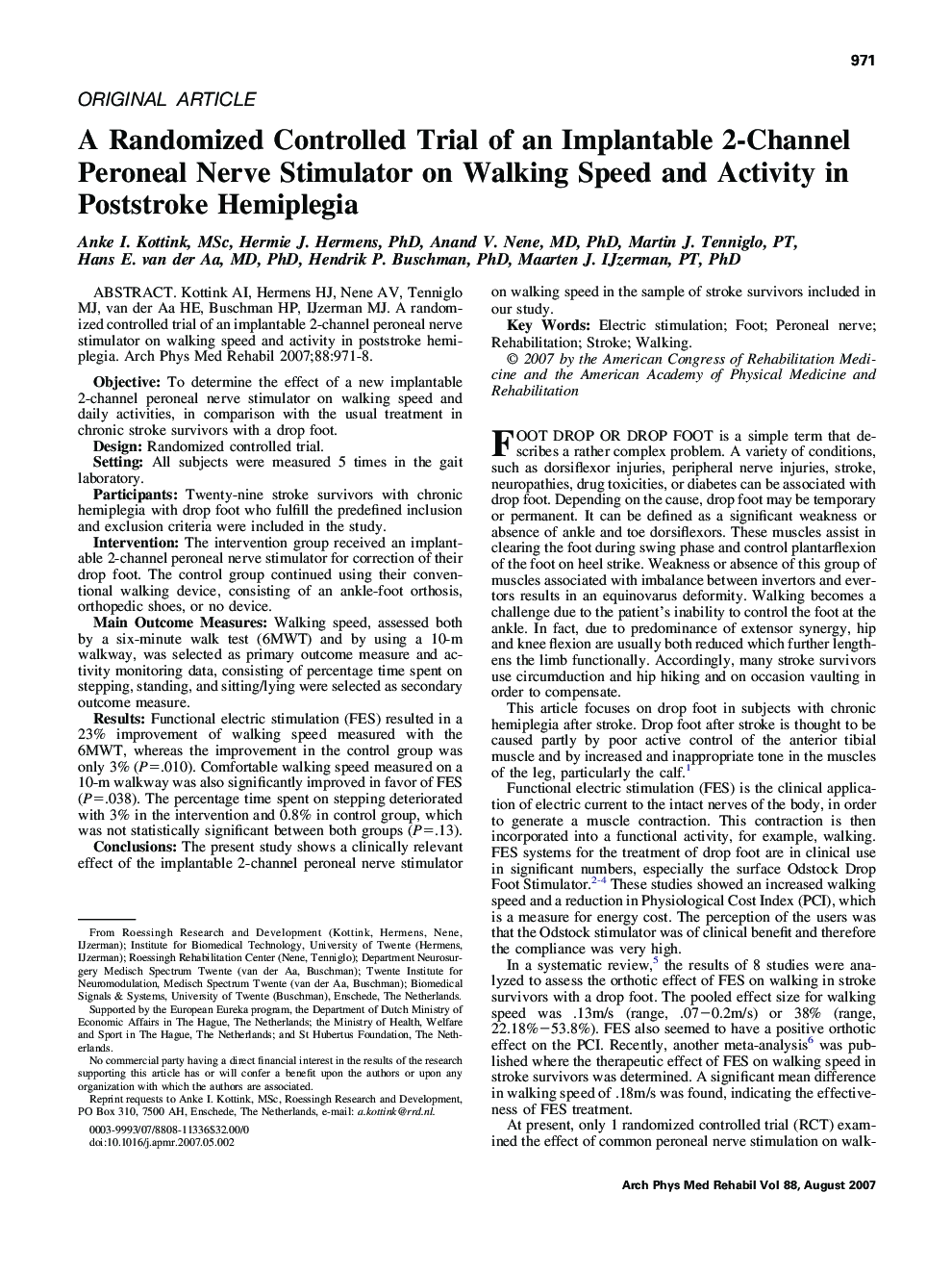| کد مقاله | کد نشریه | سال انتشار | مقاله انگلیسی | نسخه تمام متن |
|---|---|---|---|---|
| 3451719 | 1595790 | 2007 | 8 صفحه PDF | دانلود رایگان |

Kottink AI, Hermens HJ, Nene AV, Tenniglo MJ, van der Aa HE, Buschman HP, IJzerman MJ. A randomized controlled trial of an implantable 2-channel peroneal nerve stimulator on walking speed and activity in poststroke hemiplegia.ObjectiveTo determine the effect of a new implantable 2-channel peroneal nerve stimulator on walking speed and daily activities, in comparison with the usual treatment in chronic stroke survivors with a drop foot.DesignRandomized controlled trial.SettingAll subjects were measured 5 times in the gait laboratory.ParticipantsTwenty-nine stroke survivors with chronic hemiplegia with drop foot who fulfill the predefined inclusion and exclusion criteria were included in the study.InterventionThe intervention group received an implantable 2-channel peroneal nerve stimulator for correction of their drop foot. The control group continued using their conventional walking device, consisting of an ankle-foot orthosis, orthopedic shoes, or no device.Main Outcome MeasuresWalking speed, assessed both by a six-minute walk test (6MWT) and by using a 10-m walkway, was selected as primary outcome measure and activity monitoring data, consisting of percentage time spent on stepping, standing, and sitting/lying were selected as secondary outcome measure.ResultsFunctional electric stimulation (FES) resulted in a 23% improvement of walking speed measured with the 6MWT, whereas the improvement in the control group was only 3% (P=.010). Comfortable walking speed measured on a 10-m walkway was also significantly improved in favor of FES (P=.038). The percentage time spent on stepping deteriorated with 3% in the intervention and 0.8% in control group, which was not statistically significant between both groups (P=.13).ConclusionsThe present study shows a clinically relevant effect of the implantable 2-channel peroneal nerve stimulator on walking speed in the sample of stroke survivors included in our study.
Journal: Archives of Physical Medicine and Rehabilitation - Volume 88, Issue 8, August 2007, Pages 971–978